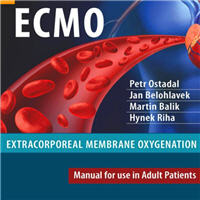Tag: mortality
Prevention of AKI and protection of renal function in ICU
Acute kidney injury (AKI) in the intensive care unit is associated with significant mortality and morbidity. The results of recent randomised controlled trials have allowed the formulation of new recommendations and/or increase... read more
Extracorporeal membrane oxygenation for poisoning in adult patients: outcomes and predictors of mortality
Data on outcomes from severe poisoning in adults receiving extracorporeal membrane oxygenation (ECMO) is currently confined to single-center experiences or specific etiologies. While ECMO cannot facilitate toxin removal,... read more
Sepsis E-alert System with Response Team Improves Outcomes
According to a new study, the use of a multifaceted intervention including an electronic sepsis alert (e-alert) system with sepsis response team was associated with improvement in care processes of sepsis and septic shock... read more
Humidification During Mechanical Ventilation: A Systematic Review
Mechanical ventilation (MV) suppresses the mechanisms that heat and moisturise inhaled air; hence, humidification is mandatory during MV. However, a systematic review published in the journal Critical Care finds no clear... read more
Potential survival benefit of polymyxin B hemoperfusion in patients with septic shock
The purpose of this study was to investigate whether polymyxin B hemoperfusion (PMX-HP) improves the survival of patients with septic shock. Our results strongly suggest that PMX-HP reduces all-cause hospital mortality and... read more
A Randomized Trial of the Amikacin Fosfomycin Inhalation System for the Adjunctive Therapy of Gram-Negative VAP
Clinical failures in ventilator-associated pneumonia (VAP) caused by gram-negative bacteria are common and associated with substantial morbidity, mortality, and resource utilization. In this trial of adjunctive aerosol therapy... read more
Intraoperative Infusion of Dexmedetomidine for Prevention of Postoperative Delirium and Cognitive Dysfunction in Elderly Patients
Intraoperative infusion of dexmedetomidine for prevention of postoperative delirium and cognitive dysfunction in elderly patients undergoing major elective non-cardiac surgery. Postoperative delirium occurs in 10% to 60%... read more
Malnutrition, Critical Illness Survivors, and Postdischarge Outcomes
The exposure of interest was malnutrition determined at intensive care unit (ICU) admission by a registered dietitian using clinical judgment and on data related to unintentional weight loss, inadequate nutrient intake, and... read more
Systolic Blood Pressure Reduction and Risk of Cardiovascular Disease and Mortality
Clinical trials have documented that lowering blood pressure reduces cardiovascular disease and premature deaths. However, the optimal target for reduction of systolic blood pressure (SBP) is uncertain. This study suggests... read more
ER Overcrowding Delays Sepsis Treatment
Prompt antibiotic initiation is associated with improved mortality in sepsis and septic shock. However, new research shows that patients with sepsis, a life-threatening complication of an infection, had delays approaching... read more
Association Between US Hospital Teaching Status and Mortality
In an observational study of approximately 21 million hospitalizations of Medicare beneficiaries, adjusted 30-day mortality rates were significantly lower at 250 major teaching hospitals compared with 894 minor teaching and... read more
Prediction of Survival and Functional Outcomes After ICU Admission
This study assesses the 6-month discriminative accuracy of patient mortality and functional outcome predictions made by intensive care unit (ICU) physicians and nurses at the time of ICU admission. Intensive care unit physicians'... read more
Effect of Home NIV on Outcomes After Acute COPD Exacerbation
This randomized clinical trial compares the effects of home oxygen therapy with vs without home noninvasive ventilation (NIV) on time to readmission or death in patients with persistent hypercapnia after an acute chronic... read more
Early EEG for outcome prediction of postanoxic coma
We recently showed that electroencephalography (EEG) patterns within the first 24 hours robustly contribute to multimodal prediction of poor or good neurological outcome of comatose patients after cardiac arrest. Here, we... read more
Malbrain Fluid Overload
Fluid overload is associated with increased morbidity and mortality. In this presentations an overview is given of the different definitions followed by a step-by-step description of the deleterious effects of fluid overload... read more
Blood pressure deficits in acute kidney injury: not all about the mean arterial pressure?
Acute kidney injury (AKI) is associated with increased morbidity and mortality. Although there are many causes of AKI, it is known that patients undergoing high-risk surgery are known to be at significant risk. Although much... read more
Albumin Administration in Sepsis: The Case for and Against
Serum albumin is an essential plasma protein, with a variety of homeostatic and predictive roles in health and disease. Hypoalbuminaemia is common in critical illness. Human albumin solution has been administered clinically... read more
Both Positive and Negative Fluid Balance May Be Associated With Reduced Long-Term Survival in the Critically Ill
Among critically ill patients with acute kidney injury, exposure to positive fluid balance, compared with negative fluid balance, has been associated with mortality and impaired renal recovery. However, it is unclear whether... read more
Serial Procalcitonin Predicts Mortality in Severe Sepsis Patients
Objectives: To prospectively validate that the inability to decrease procalcitonin levels by more than 80% between baseline and day 4 is associated with increased 28-day all-cause mortality in a large sepsis patient population... read more
The impact of oral care on oral health status and prevention of VAP in critically ill patients
Ventilator-associated pneumonia (VAP) is one of the most common nosocomial infections which increase mortality rate and length stay of hospitalization. Oral care would not only improve patient’s oral health and well-being,... read more
Systemic and Microcirculatory Effects of Blood Transfusion in Experimental Hemorrhagic Shock
The microvascular reperfusion injury after retransfusion has not been completely characterized. Specifically, the question of heterogeneity among different microvascular beds needs to be addressed. In addition, the identification... read more
Big Data Detects Sepsis In Major Hospitals
Data analytics have found that large medical facilities have higher rates of death from sepsis than their smaller hospital counterparts. Researchers from Houston Methodist Hospital recently used Big Data analytics to learn... read more









